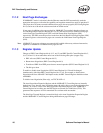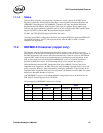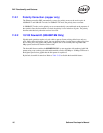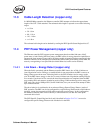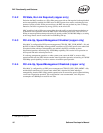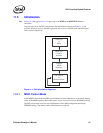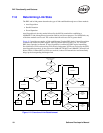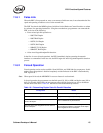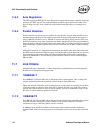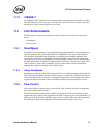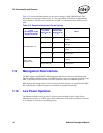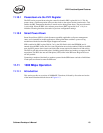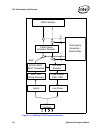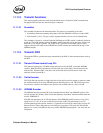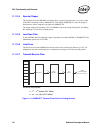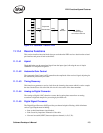
196 Software Developer’s Manual
PHY Functionality and Features
11.6.3 Auto Negotiation
The PHY supports the IEEE 802.3u Auto-Negotiation scheme with next page capability. Next Page
exchange uses PHY register 7d to send information and PHY register 8d to receive them. Next
Page exchange can only occur if both ends of the link advertise their ability to exchange Next
Pages.
11.6.4 Parallel Detection
Parallel detection can only be used to establish 10 and 100 links. It occurs when the PHY tries to
negotiate (transmit FLPs to its link partner), but instead of sensing FLPs from the link partner, it
senses 100BASE-TX MLT3 code or 10BASE-T Normal Link Pulses (NLPs) instead. In this case,
the PHY immediately stops Auto-Negotiation (terminates transmission of FLPs) and immediately
brings up whatever link corresponds to what it has sensed (MLT3 or NLPs). If the PHY senses both
of the technologies together, a parallel detection fault is detected and the PHY continues sending
FLPs
With parallel detection, it is impossible to determine the true duplex state of the link partner, and
the IEEE standard requires the PHY to assume a half-duplex link. Parallel detection also does not
allow exchange of flow-control ability (PAUSE and ASM_DIR) or Master/Slave relationship
required by 1000BASE-T. For this reason, parallel detection cannot be used to establish Gigabit
Ethernet links.
11.7 Link Criteria
Once the link state is determined—via Auto-Negotiation, parallel detection or forced operation—
the PHY and its link partner bring up the link.
11.7.1 1000BASE-T
For 1000BASE-T links, the PHY and its link partner enter a training phase. They exchange idle
symbols and use the information gained to set their adaptive filter coefficients.
Either side indicates completion of the training phase to its link partner by changing the encoding
of the idle symbols it transmits. When both sides so indicate, the link is up. Each side continues
sending idle symbols whenever it has no data to transmit. The link is maintained as long as valid
idle, data, or carrier extension symbols are received.
11.7.2 100BASE-TX
For 100BASE-TX links, the PHY and its link partner immediately begin transmitting idle symbols.
Each side continues sending idle symbols whenever it has no data to transmit. The link is
maintained as long as valid idle symbols or data is received.
In 100Mbps mode, the PHY establishes a link whenever the scrambler becomes locked and
remains locked. Link will remain up unless the descrambler receives idles at less than a specified
rate.



